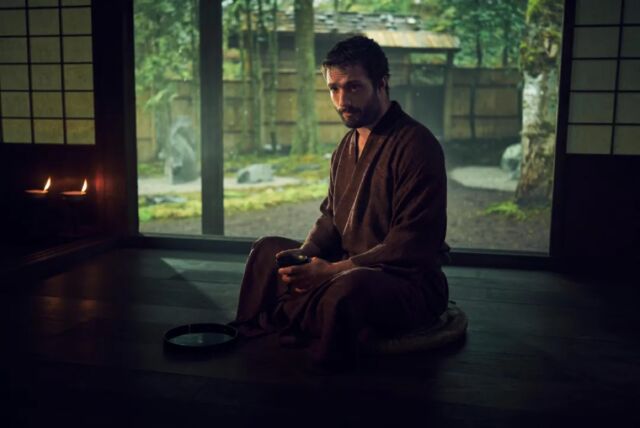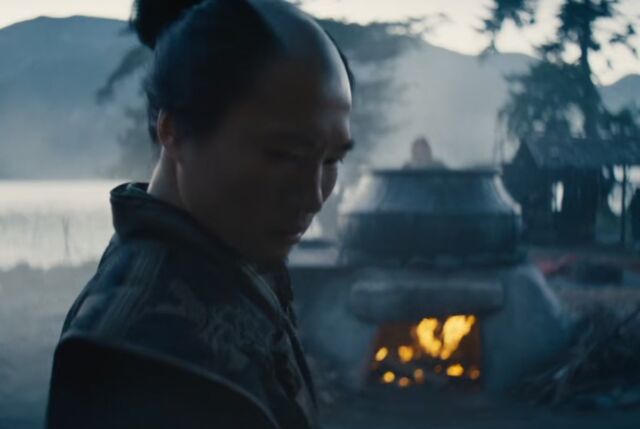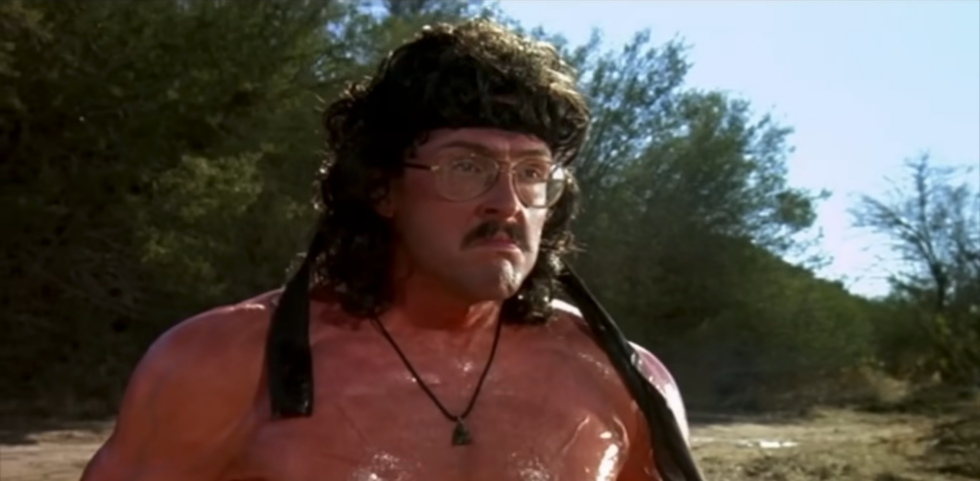
Enlarge / FX/Hulu's Shōgun is a stunning new adaptation of the bestselling 1975 novel by James Clavell. (credit: FX/Hulu)
FX/Hulu's new historical epic series, Shōgun, based on the bestselling 1975 novel by James Clavell, has met with both popular and critical acclaim since its February premiere, drawing over 9 million views across all platforms in the first six days alone. The storytelling, the characters, the stellar performances, the expert pacing all contribute to that success. But it's also a visually stunning achievement that brings 17th-century feudal Japan to vivid life, thanks to masterful special effects that have been woven in so seamlessly, it can be challenging to distinguish between the CGI and the real footage.
The novel is a fictionalized account of the key players and events in 17th-century feudal Japan that ultimately led to the naming of a new shōgun (central ruler), Tokugawa Ieyasu, and the advent of the Edo period. The climactic event was the October 21, 1600, Battle of Sekigahara, in which Tokugawa defeated a coalition of clans led by Ishida Mitsunari. Clavell's novel also includes a fictionalized version of an English navigator named William Adams, aka Miura Anjiin ("the pilot of Miura"), who was the first of his nation to reach Japan in 1600, eventually becoming a samurai and one of Tokugawa's key advisers.
Clavell's epic saga was a blockbuster success, selling over 6 million copies by 1980. The author changed the names of all the main characters, purportedly to "add narrative deniability," and despite some inevitable inaccuracies and authorial liberties, the novel is breathtaking in scope, chock-full of encyclopedic period details. In fact, Shōgun is often credited with introducing an entire generation of Western readers to Japanese history and culture. "In sheer quantity, Shōgun has probably conveyed more information about Japan to more people than all the combined writings of scholars, journalists, and novelists since the Pacific War," an editor named Henry Smith wrote in 1980.
It was also just a cracking good read and perfect fodder for the miniseries craze that hit broadcast TV in the late 1970s and early 1980s, driven by the runaway success of 1977's Roots. A nine-hour miniseries adaptation of Shōgun ran over five nights in September 1980, starring Richard Chamberlain as John Blackthorne and Toshiro Mifune as Lord Yoshii Toranaga, the fictional characters based on Adams and Tokugawa, respectively. It, too, was a massive success, driving even more sales of Clavell's novel, although the reception in Japan was far more negative.

Hiroyuki Sanada stars as Lord Yoshii Toranaga, a character based on the historical figure Tokugawa Ieyasu. (credit: FX/Hulu)
Fast-forward to 2018, when FX announced that it had made a straight-to-series order for a new adaptation of the novel, created by Justin Marks and Rachel Kondo. This time around, Cosmo Jarvis (Peaky Blinders, Raised by Wolves) stars as Blackthorne, while Hiroyuki Sanada (The Last Samurai, John Wick: Chapter 4) plays Toranaga. It's been described as "a Game of Thrones set in 17th century Japan," although calling it a 17th century Japanese Godfather also captures the essence of the new series.
This new incarnation of Shōgun opens in 1600. Japan's Taikō died the year before, leaving five regents equally responsible for protecting his heir until the child comes of age. Toranaga is one such regent, but his rival, Lord Ishido (Takehiro Hira), conspires with the other three to have Toranaga impeached, with the ultimate goal of double-crossing his co-conspirators, killing the child, and ruling himself. Meanwhile, Blackthorne's ship, Erasmus, wrecks on the shore of the coastal village Ajiiro, where Portuguese Catholic priests try to turn the local samurai against the Protestant survivors.
Blackthorne finds himself embroiled in this hotbed of political intrigue when Toranaga takes a shine to him, envisioning a key role for the English pilot in Toranaga's own secret machinations. There is a scheming local lord, Kashigi Yabushige (Tadanobu Asano) trying to play both sides; a charming Spanish sailor named Vasco Rodrigues (Nestor Carbonell, Lost) who befriends Blackthorne; and the alluring translator, Toda Mariko (Anna Sawai), who finds herself torn between her loyalty to Toranaga and her Catholic faith—not to mention a growing attraction to the foreign Anjin.
The responsibility for putting together all those seamless special effects fell to VFX supervisor Michael Cliett, whose extensive credits include Falling Skies, iZombie, Arrow, The 100, and Serenity. Cliett and his team spent a grueling three years agonizing over every historical detail. "It was all worth it, all the blood, sweat, and tears," Cliett told Ars. "I'm so proud of the show and I'm so grateful at the reception that it's gotten, the recognition of our hard work. I'm grateful to have been part of it."
Ars caught up with Cliett to learn more.
(WARNING: Some spoilers below.)

John Blackthorne (Cosmo Jarvis) is based on 17th-century English navigator William Adams. (credit: FX/Hulu)
Ars Technica: Hiroyuki Sanada is both a lead actor and producer on Shōgun and has stressed how important it was to him for the series to be authentic to Japanese history. How did that impact the VFX?
Michael Cliett: Everything had to be accurate from a historical standpoint. The buildings and the environments we built had to be accurate, down to the tile work, the patterns, down to the last detail. It was a tremendous collaboration effort between us and numerous Japanese historians and advisers that we brought over.
That carried into even the crowds and the armies—the digital people that we built and the animation cycles we had to do for the armies. In Episode Five, Toranaga comes to the beach with 100,000 soldiers; we had 100 real people there. The army, the townspeople for the set extensions through the cities and the towns, they walked differently than the peasants in Ajiro, the little village. We did motion capture shoots with Japanese people and experts in the gestures of it all. We really strove to present an authentic version of the feudal Sengoku era in Japan. And I think we achieved that. I hope that our audience is fully immersed in that world.
Ars Technica: What was your guiding philosophy behind the VFX?
Michael Cliett: We wanted the visual effects to be as invisible and as seamless as possible, all in service of the story and in an effort to fully immerse our audience into 1600 feudal Japan. For me, there's no greater compliment when you're able to watch a show and you know that there must have been visual effects, but you're immersed in the story, and you're not thinking about whether they are bad or good special effects. You shouldn't be thinking about the fact that those are visual effects.

Anna Sawai plays Toda Mariko, torn between her loyalty to Toranaga and her Catholic faith. (credit: FX/Hulu)
When we did the earthquake sequence in Episode Five, for instance, we had our immediate practical location right there. Everything around that immediate practical location became a full 3D environment, and I don't think you can tell. In Episode Four when they're doing the cannon training, we filmed that out in a place with no mountains. It's supposed to be in a field near Ajiro, surrounded by a mountainous region, because that's the same field that Toranaga is going to put his army and build their encampment. It's the same field that the landslides happen in Episode Five, when there is an earthquake; all the mountains collapse and bury the army. So any of those mountains you see in Episode Four, around that training field, those were added by visual effects.
When we did the storm sequence in Episode One, with the ship going from shot to shot, we had to make sure that the boat's orientation matched where it was going from the CG shot to the practical shot on deck. The ocean, the waves, that had to match from cut to cut. So great care was taken to make sure that everything was as invisible and as seamless as possible.
Ars Technica: This was a brutal period, and the series doesn't shy away from occasionally depicting violence, whether it's beheadings, seppuku, or one memorable scene in the pilot in which a sailor is quite literally boiled alive. How did you handle those elements?
Michael Cliett: Visual effects had a big hand in all of that, even the one shot of the poor guy getting boiled in the pot. That was the full digital head, even the hair. There was an actor there, but we replaced the actor with a digital double, completely CG. It gets hard to a degree if you're emotionally attached to what's happening. You have to detach from it a little bit and focus more on the technical aspects and think about that rather than the horror of what's actually happening in the moment. Later you can sit back and be like, "Oh, wow."

We'll spare you a closer look at that poor sailor being boiled alive. (credit: FX/Hulu)
Case in point, the beheading in Episode One. That's a perfect example of what I mean by having the VFX be in service of the story. That was a really important shot for us, because that moment was meant to show the audience that Blackthorne might as well be on an alien planet—a shocking moment to show how much of a fish out of water he is. What is this world he has stepped into? I remember going down to LA in early February and sitting in the Academy Theater with 1,000 other people watching the premiere. That moment happened and there was a collective gasp. I was, like, "Yes!"
But when we were working on it, we were thinking about, okay, the average weight of a human head is 10 pounds. Once it's separated from the body, that inertia will carry it so far. Once the blade hits, it's going to spin fast and then gravity is going to take over. We probably went through 100 iterations of that animation of the head coming off before we said, "Okay, that looks real. That's right."
The original shot was just the actor standing there. When we cued him, he slumped down and dropped to his knees out of frame. We did a digital scan of his head, and then we made a CG version of it. The moment the CG blade comes through and separates his head, in one frame and the next, it's swapped with the CG head that starts spinning. The blood is added, and then we have that head drop out of frame with a headless digital prosthetic body. The physics are always important, just like with the chain cannon shots going through Jozen and his men at the end of Episode Four. We ran multiple physics simulations on all of that to see what would really happen, in order to get that right before we even started the actual shots.

Blackthorne trains Toranaga's men in the art of the English cannon. (credit: FX/Hulu)
Ars Technica: What were the biggest challenges for the VFX team?
Michael Cliett: Ensuring the authenticity factor throughout the process was easily the most challenging thing. Everything we did, there had to be a story behind it as far as why. We couldn't just do something because it looked cool. That scene in Episode Seven with Saeki bringing his ships in to surround Ajiro, to block all the exits off—we did a tremendous amount of research around those ships. Those were actually the ships used by General Ishida, the real Ishida, not our [fictional] Ishido. He invaded Korea with those boats in 1597, three years before our story takes place. So that's where we got all those designs.
In Episode Three, for the ship race out of Osaka, we didn't really have that story figured out when we shot it. We still shot a bunch of things, and I had a good idea myself of what we needed to do as far as specific shots. But it wasn't until we really got into the post end that everything came together. I went down to LA for three months trying to lock down that edit, and I think it worked pretty well in the end. But that was the biggest specific challenge.
Ars Technica: The special effects here are so much better than what was available for the 1980 adaptation of Clavell's novel. How has the attitude toward VFX changed in the era of streaming television?
Michael Cliett: Certainly, the access to the technology has changed. You used to need computers half the size of a house to run some of the software that we have, and now, anybody's personal computer can do it. And I think there's more money in some of these TV shows now than there was prior. There's been a big investment into streaming, and they've recognized that the budgets need to be bigger for the visual effects as well. It's always been a very labor-intensive process. You don't just press some buttons. It takes a lot of time and a lot of effort and a lot of people to get it right. It doesn't just happen; it's an art. Studios have come to understand that better. The technology's always evolving and getting better. And I think in the future, we'll be able to do more with less.

Historical accuracy was a top priority for everyone, from the writers and set designers to the VFX team. (credit: FX/Hulu)
Ars Technica: Do you envision AI being used in VFX in the future?
Michael Cliett: I think there's a small conglomerate that hopes AI can replace a lot of jobs. I think it'll enable studios to do more and to take on more work. There's going to be a bit of a consolidation of visual effects houses, which I think is going to be good for the business. There's a lot of visual effects houses competing for a lot of work and undercutting each other. It's like a race to the bottom. So AI is going to force some level of consolidation across the board. We'll have to wait around and see what happens.
I don't think AI is going to replace the need for artists. If people start producing things strictly using AI, eventually society will be turned off by that. People are going to want to see human-created art and entertainment, with AI-assisted, because AI is just echoing humans anyway. For me, when these AI images first started coming out, I was like, "Whoa, those look really good. That's cool." When I look into it now, the shine's wearing thin. Yeah, it might look good, but I would much rather go to a museum and stare at a Van Gogh for three hours. There's so much more meaning behind that, and there's nothing behind that AI image.
I hope we, as a society, demand that things continue to be created by humans. There's so much more value and interest in that. For me, I always want to know how things were created. What was in the writer's head, what was in the cinematographer's head? And I'm not the only one. There are a lot of people interested in the behind-the-scenes process. If it's just AI, there's not going to be any of that, and it's just going to be hollow and empty. So I think AI will be a tool that will enable us to get better and faster and more productive and more streamlined, but it will never replace people.
All episodes of Shōgun are now streaming on Hulu.
Shōgun official trailer.






